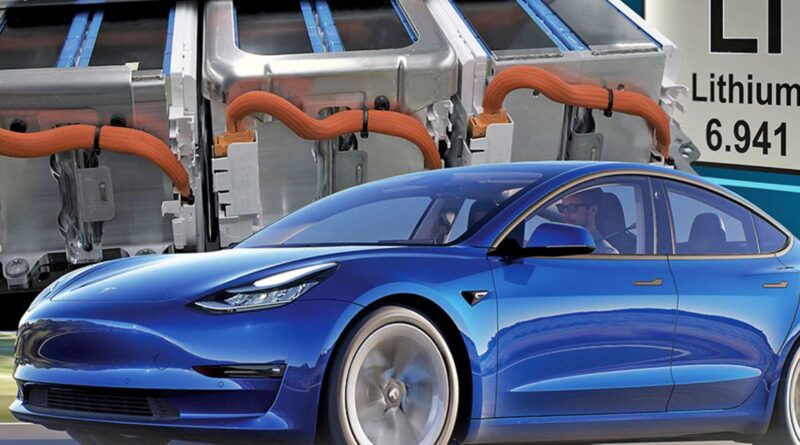LFP batteries offer cheaper alternative with less range
Tucked beneath the floor of most electric vehicles today is a nickel manganese cobalt battery, a type of lithium ion battery. The chemistry has had a dominant run as EVs have proliferated because of its ability to hold an ample charge.
But nickel manganese cobalt, called NMC, is being challenged, experts say, as lithium iron phosphate, known as LFP, batteries provide a cheaper alternative, although they trade some range.
“LFP, from a manufacturer standpoint, is a great compromise,” said Conrad Layson, senior alternative propulsion analyst at AutoForecast Solutions, a global consultancy and forecasting firm.
“From a user standpoint, it might be too much of a compromise. We won’t know that yet until it really propagates out here in the Western market.”
LFP batteries, which also fall under the lithium ion umbrella, are already powering a substantial number of EVs in China. But they have not reached the U.S. in any appreciable volume, said Dan Blondal, CEO of Nano One Materials Corp., a battery technology firm based in Vancouver, British Columbia.
Blondal does not expect LFP to supplant NMC entirely, but he sees it being used in lower-cost vehicles.
“There’s never going to be a winning chemistry because they all have different strengths and weaknesses,” he said.
He estimates that LFP battery packs with up to 60 kilowatt-hours and vehicles with ranges of about 250 miles mark the high point of the chemistry’s capabilities.
LFP’s cooler running temperature and better safety credentials — with slim to no chance of bursting into flames — have helped the batteries gain ground in China, said Layson.
Cost and availability of resources are among other relative benefits, Blondal said. The expensive nickel and cobalt required for NMC is replaced in the LFP formula by relatively cheap iron and phosphate, allowing automakers to cut battery and overall EV costs.
In 2021, LFP battery cells cost about 30 percent less than NMC cells, according to Bloomberg-NEF. But the cost equation fluctuates.
LFP has typically been cheaper than NMC, said Yayoi Sekine, head of energy storage at BloombergNEF, but recent surges in the price of lithium, which both battery types require, have narrowed the gap.
“It actually matters more for LFP than it does for the other chemistries because as a percentage of the total weight, LFP does have a higher percentage” of lithium, Sekine said.
In the U.S., EV range might prove to be a greater liability for LFP. The chemistry cannot match the energy density of NMC, Layson said. And unless U.S. consumers show a willingness to compromise on range, he remains skeptical about widespread LFP uptake.
“People used to zipping into a gas station, filling up and going in under five minutes, they’re going to resist this, and that’s the majority of drivers on the road today,” Layson said.
Despite the mixed value proposition, LFP-powered vehicles are coming.
Tesla’s Shanghai-built Model 3, sold mainly in China, uses LFP batteries produced by CATL, Layson said.
“I think we will see a CATL battery manufacturing facility here in North America to satisfy Tesla with their LFP-powered Model 3s, and those will be coming out of Austin,” Texas.
Other automakers are also working to apply LFP, though Europe will typically be the initial stopping point before the technology reaches North America, Layson said. He pointed to Renault Group’s low-cost Dacia Spring as one example already on sale, adding that BMW, Mercedes-Benz and Volkswagen are working with LFP as well.
As with the Spring, low-cost vehicles with relatively limited range are likely to be the first converts.
The new battery option, Sekine said, should provide EV customers more choice, letting them prioritize cost or range.
“There’s still space for automakers to offer different models that have higher range and lower range and potentially use LFP for lower-range vehicles [and] NMC and other chemistries for higher range,” she said.
The evolution in batteries makes it an “exciting and tumultuous time” to be designing EVs, Sekine said. But she warned that the supply chain has a lot of catching up to do before locally produced materials can support one chemistry, let alone two.
“North America, generally speaking, lacks a lot of the actual process of the materials and mining of the materials,” Sekine said. “What it would take to build out any chemistry is a lot of investment.”
Yet Blondal thinks the supply chain challenge is one more mark in LFP’s favor.
The U.S. would need to build both mining and refining capacity for the materials in NMC batteries, he said. For LFP, suppliers could rely on large, existing streams of iron and phosphate and focus solely on the refining part of the equation.
“With iron and phosphorous, it’s not as handcuffed because the volumes there are already large,” Blondal said. “It’s a matter of just putting the right refineries in place.”
Source : Autonews.com




